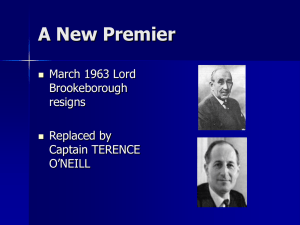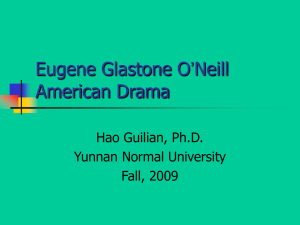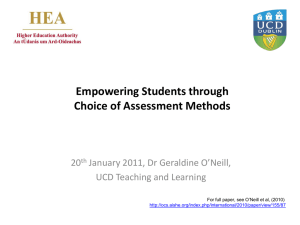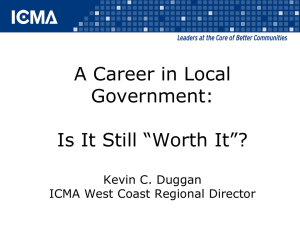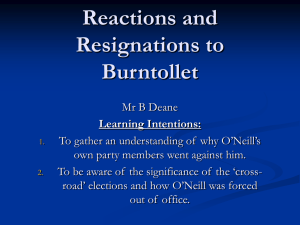O`NEILL Louise Kay
advertisement
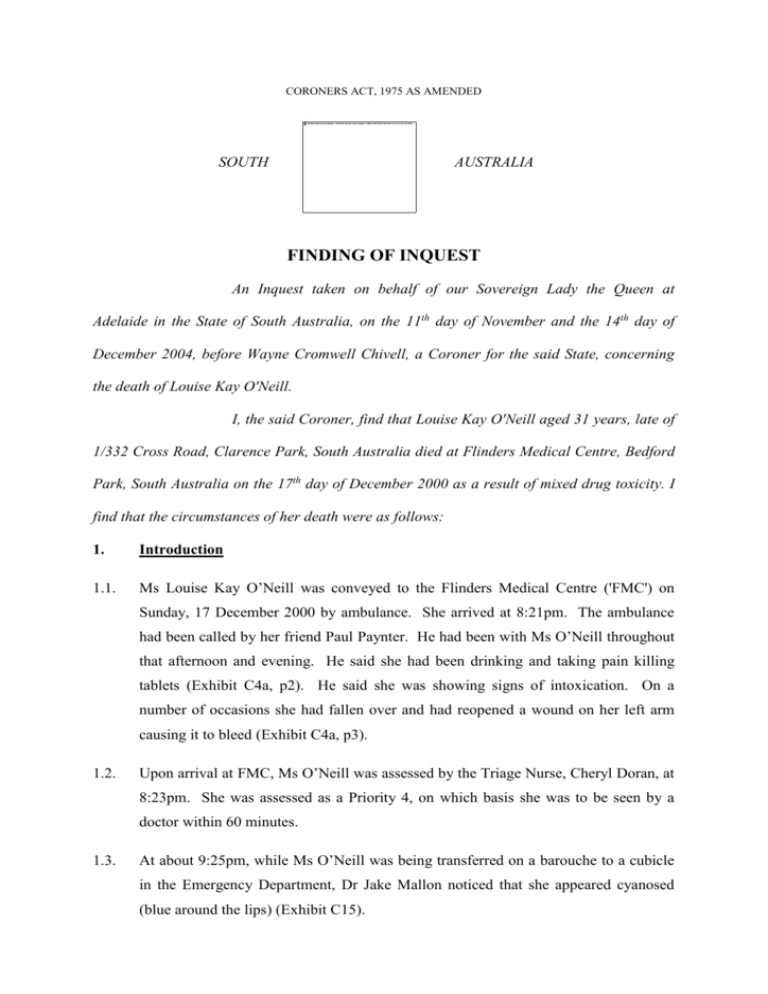
CORONERS ACT, 1975 AS AMENDED
SOUTH
AUSTRALIA
FINDING OF INQUEST
An Inquest taken on behalf of our Sovereign Lady the Queen at
Adelaide in the State of South Australia, on the 11th day of November and the 14th day of
December 2004, before Wayne Cromwell Chivell, a Coroner for the said State, concerning
the death of Louise Kay O'Neill.
I, the said Coroner, find that Louise Kay O'Neill aged 31 years, late of
1/332 Cross Road, Clarence Park, South Australia died at Flinders Medical Centre, Bedford
Park, South Australia on the 17th day of December 2000 as a result of mixed drug toxicity. I
find that the circumstances of her death were as follows:
1.
Introduction
1.1.
Ms Louise Kay O’Neill was conveyed to the Flinders Medical Centre ('FMC') on
Sunday, 17 December 2000 by ambulance. She arrived at 8:21pm. The ambulance
had been called by her friend Paul Paynter. He had been with Ms O’Neill throughout
that afternoon and evening. He said she had been drinking and taking pain killing
tablets (Exhibit C4a, p2). He said she was showing signs of intoxication. On a
number of occasions she had fallen over and had reopened a wound on her left arm
causing it to bleed (Exhibit C4a, p3).
1.2.
Upon arrival at FMC, Ms O’Neill was assessed by the Triage Nurse, Cheryl Doran, at
8:23pm. She was assessed as a Priority 4, on which basis she was to be seen by a
doctor within 60 minutes.
1.3.
At about 9:25pm, while Ms O’Neill was being transferred on a barouche to a cubicle
in the Emergency Department, Dr Jake Mallon noticed that she appeared cyanosed
(blue around the lips) (Exhibit C15).
2
1.4.
Ms O’Neill was conveyed immediately to a room where urgent resuscitation measures
were undertaken and continued for 34 minutes.
Unfortunately, these were
unsuccessful and at 10:04pm Dr Diane King, the Director of the Emergency
Department who had been present and participating in the resuscitation attempts,
pronounced her life extinct (Exhibit C16, p2).
2.
Cause of death
2.1.
A post-mortem examination of the body of the deceased was performed by Dr R A
James, Chief Forensic Pathologist, on 19 December 2000 at the Forensic Science
Centre in Adelaide.
2.2.
In relation to Ms O’Neill’s wrist injury, Dr James noted as follows:
'On the front of the left wrist was a curved incised would extending deeply into the
subcutaneous tissues exposing tendons and blood vessels. A 5cm extension down the
left arm was noted. 19 sutures held this healing injury together. There was a 9cm
extension vertically up the left forearm with yellow/brown bruises. A small laceration
was noted on the left middle finger. The appearances were those of an injury in the
healing phase with recent reopening.'
(Exhibit C2a, p2)
2.3.
Dr James arranged for a toxicological assessment of a blood sample taken from Ms
O’Neill. The toxicology report prepared by Ms H E Felgate, Forensic Scientist,
revealed that her blood contained the following:
'1.
The blood contained:
(1) Approximately 3.3 mg propoxyphene per L. (fatal level).
(2) Approximately 2.2 mg fluvoxamine per L. (greater than therapeutic level).
(3) A toxic concentration of alprazolam.
(4) Non-toxic/therapeutic
concentrations
respectively
of
diazepam
and
nordiazepam.'
(Exhibit C3a)
2.4.
None of the common drugs of abuse, such as morphine, codeine, amphetamines,
cannabinoids, etc were detected in the blood or in the urine, and no alcohol was
detected in the blood.
2.5.
On the basis of the toxicology report, Dr James diagnosed the cause of Ms O’Neill’s
death as ‘mixed drug toxicity’ (Exhibit C2a, p1).
3
2.6.
I accept Dr James’ opinion about that, and find that the cause of Ms O’Neill’s death
was mixed drug toxicity.
3.
Background
3.1.
Ms O’Neill had a history of prescription drug abuse and suicide attempts. Professor
Drew Richardson, formerly a Director of the Emergency Department at Canberra
Hospital, summarised this history as follows:
'1. Past History: Louise Kay O’Neill had a very extensive past history recorded at
hospitals in Adelaide. In particular, she had multiple presentations and admissions
for the management of deliberate self-harm. Her presentation on 17/12/2000 was the
eighth such presentation in a little over two years, and her fourth life threatening
presentation (see appendix for details):
19/09/98
Overdose Digesic & alcohol
1/12/98
Polypharmacy overdose, laceration L Wrist, life threatening (required
ventilation)
1/02/00
Laceration L Wrist – surgical repair, intoxicated
5/02/00
Overdose Xanax & alcohol, lacerations to arm & leg
9/02/00
Polypharmacy overdose, GCS3, life threatening (required ventilation)
25/07/00
Driver in Car Crash – admitted intoxication – Digesic, serepax, red wine
12/12/00
Cut L Wrist with Kitchen Knife – life threatening (arterial laceration)
17/12/00
Polypharmacy overdose, removed plaster, reopened wound, life
threatening (died)
Therefore, one root cause of her death was her repeated high risk behaviour. It is
almost inevitable that a recurrent series of life threatening events will end with death
or serious injury.'
(Exhibit C17, p1)
3.2.
Events of 17 December 2000
As I have already mentioned, Ms O’Neill spent most of 17 December 2000 with her
neighbour, Paul Paynter. Mr Paynter’s statement (Exhibit C4a) relates that he took
her shopping to a supermarket where she purchased some food items. He said that
she appeared ‘drunk’ and ‘shaky’. He commented:
'She was always very tired and upset easily.'
(Exhibit C4a, p1)
3.3.
While they were shopping, Mr Paynter noticed that Ms O’Neill was having trouble
walking, and relied on him for support. She told him that she had taken some pain
killers (Exhibit C4a, p2).
4
3.4.
When they returned to Ms O’Neill’s unit, they ate some of the food and drank red
wine.
3.5.
At about 4pm, Ms O’Neill began complaining that her arm was throbbing. She had
taken the bandage off. She had fallen over a couple of times and the wound on her
left wrist had started bleeding.
3.6.
Mr Paynter said that he telephoned SA Ambulance Service via the ‘000’ number at
about 7:30pm. He said that just before the ambulance arrived Ms O’Neill went into
the kitchen and he heard what sounded like tablets being removed from their wrapper.
He later saw a foil tablet holder in the kitchen, but did not know what type of
medication it was. He assumed they were pain killers (Exhibit C4a, pp3-4).
3.7.
Mr Paynter mentioned that, about two weeks earlier, he had seen a needle in Ms
O’Neill’s unit. She had asked him to inject her but he declined (Exhibit C4a, p4).
3.8.
According to the SA Ambulance Service records (Exhibit C5a), Mr Paynter’s call was
received at 7:47pm, and the ambulance arrived at 8pm. They departed at 8:10pm and
arrived at FMC at 8:21pm.
3.9.
The history taken by the ambulance officers included that Ms O’Neill had a history of
‘? Schizophrenia?’, that her medications included ‘Fluvox? Voltaren, Capadex’. The
history recorded:
'Patient cut her left wrist with a knife last Wednesday. Was sutured in RAH and
backslab secured. Patient removed backslab today as was hot and now wound exposed
with minor haemorrhage.'
(Exhibit C5a)
3.10. Ms O’Neill’s condition was described as ‘drowsy, oriented, GCS (Glasgow Coma
Scale) 15 (100%), pale, warm, diaphoretic (producing or increasing perspiration)’.
She was described as ‘tired and lethargic’.
3.11. Ms O’Neill’s vital signs were relatively normal at respiration rate of 16 and regular, a
heart rate of 80, and blood pressure of 100 systolic.
3.12. A bandage was applied to Ms O’Neill’s wrist for the journey to the hospital.
5
3.13. Arrival at Flinders Medical Centre
On arrival at FMC, Ms O’Neill was seen by Registered Nurse Cheryl Doran. RN
Doran has 30 year’s experience as a nurse and it was her function, as a Triage Nurse,
to allocate a priority to Ms O’Neill’s admission according to the degree of urgency.
3.14. RN Doran said that the wound on Ms O’Neill’s left wrist was not bleeding and so she
allocated her a Priority 4. She said the ambulance officer told her that Ms O’Neill
was a bit drowsy, so she spoke to Ms O’Neill who did not respond. Her description
of what happened is as follows:
'… So I got up, went over and spoke to her and I just said, 'Louise,' and she didn't
respond so I just went like that on her chest and she opened her eyes and she looked at
me. I took her pulse as I was talking to her. That was okay. Her pupils looked okay and I
said - she didn't want to talk to me, she sort of flicked me off with her shoulder and I
said, 'No, talk to me.' Then I said to her, 'Why are you drowsy?' and she said she'd had a
headache all day and she'd taken some Mersyndol. I said, 'How many did you take?' And
she said, 'Not too many.' I said, 'Did you take anything else?' She said, 'No.' Then she
said, 'I need to cough.' So she sat up on the barouche and had a cough and then she asked
for a tissue. So I went around to the bench and brought her a tissue and gave it to her. I
think that's all and then she just lay down.'
(Exhibit C14, pp4-5)
3.15. RN Doran said that Ms O’Neill was in the ‘end bay’ in the triage area and was on
view from her position the entire time. She said that she was aware that Ms O’Neill
had a history of an overdose so she kept a ‘close eye on her’ (Exhibit C14, p9).
3.16. RN Doran said that she checked Ms O’Neill again at about 9pm and was told to ‘go
away’ (Exhibit C14, p10).
3.17. RN Doran said that she did not commence an observation chart for Ms O’Neill. At
one stage she took her pulse, but was unable to remember the result of the test. She
said she did not record that because:
'I just did it for my own benefit.'
(Exhibit C14, p13)
I accept that if RN Doran had a concern after taken Ms O’Neill’s pulse, she would
have passed her concerns on when she commenced her meal break. However, in my
opinion, she should have recorded the result of her observation on a chart so that the
reading could provide a basis for comparison when it was checked later.
6
3.18. RN Doran left for a meal break at around 9pm and had no further contact with Ms
O’Neill. She made an entry in the clinical record, after Ms O’Neill’s death, which
reads:
'I last checked the patient at approximately 2100, she appeared to be sleeping and her
colour was normal.'
(Exhibit C15)
3.19. During RN Doran’s meal break, she was relieved by RN Emelia Serafini.
RN
Serafini has returned to the United Kingdom, and was not available to give evidence.
Her statement (Exhibit C10a) records that Ms O’Neill’s barouche was only about four
metres away from her position in the central booth. She could see that Ms O’Neill
was breathing and that she appeared to be asleep. After the handover, she walked
over to Ms O’Neill. Her observations were as follows:
'I shook her arm on her left side and asked her if she was alright. She opened her eyes
and turned her head to look at me. I counted her breathing 20 breaths per minute and
they were unlaboured. I had my hand on her arm and it was warm to touch and her skin
colour was pink. Louise was positioned in the bay area to the right of the doors when
looking out from the booth. She was facing the booth with her feet closest to the booth
area. Another patient arrived so I went to book them in.'
(Exhibit C10a, p2)
3.20. RN Serafini had no further contact with Ms O’Neill until her collapse had become
apparent while she was being conveyed to a cubicle to be examined.
3.21. From that point on, resuscitation proceeded, as I have already outlined, until Ms
O’Neill’s life was pronounced extinct at 10:04pm.
4.
Issues arising at inquest
4.1.
I heard evidence from Professor Drew Richardson who is now Chair of Road Trauma
and Emergency Medicine at Canberra Clinical School.
Until 2003, Professor
Richardson was also the Director of the Emergency Department at Canberra Hospital.
Professor Richardson has practised in emergency medicine for 20 years, and was
made a Fellow of the Australian College of Emergency Medicine in 1993.
4.2.
Professor Richardson agreed with Dr James’ opinion about the cause of death which I
have accepted earlier in these findings. He commented that the level of propoxyphene
(in ‘Capadex’ or ‘Digesic’) was sufficient to have caused her death by itself, but the
7
other medications in her blood would have added to the central nervous system
depressant properties of that medication (T69).
4.3.
A letter from Ms O’Neill’s parents indicated that she had been prescribed 100
Paradex tablets two days before her death and that only 16 of these tablets were left
when they examined her unit after her death. Professor Richardson commented:
'This history fits the time course of a large oral overdose of propoxyphene, making it the
most likely cause of death. This is a potentially reversible condition if treated before
cardiac arrest.'
(Exhibit C17, p2)
4.4.
Professor Richardson noted that when Ms O’Neill presented to the FMC at 9:23pm on
17 December 2000 she was not nearly as unwell as she had been on her previous three
presentations.
For that reason, her rapid decline over the next 70 minutes was
unexpected both in terms of her initial condition and her past history.
4.5.
In view of the evidence of the ambulance officer and RN Doran, there was no
evidence that any information was passed to FMC staff which suggested that Ms
O’Neill had taken an overdose of narcotic analgesics. When RN Doran investigated
the possibility that Ms O’Neill had taken an overdose (based on her previous history),
Ms O’Neill told her that she had only taken ‘Mersyndol’, a relatively mild analgesic.
Professor Richardson commented:
'It is also possible that Ms O’Neill was unaware of the major difference between
Mersyndol and Paradex. On the basis of the available evidence … ED staff acted
appropriately and made a reasonable attempt to identify any drug issues, but did not
obtain all the correct information.'
(Exhibit C17, p2)
4.6.
Professor Richardson said that RN Doran’s allocation of a Priority 4 in the triage
process was arguable, in that it could have justifiably been a Priority 3 (to be seen
within 30 minutes). However, these triage scales are flexible, and there was nothing
inappropriate about the allocation of a Priority 4 (T71).
4.7.
Further, although the allocation of a Priority 4 indicated that Ms O’Neill should have
been seen within 60 minutes, the fact that she was not seen for 73 minutes is not cause
for concern. He said:
'Such waits are common in busy Emergency Departments.'
(Exhibit C17, p2)
8
4.8.
The only area in which Professor Richardson was mildly critical of the treatment Ms
O’Neill received was the extent to which she was observed while awaiting treatment
in the triage room. He commented:
'Observation: The major deterioration in Ms O’Neill’s condition occurred between
approximately 21:00 when Nurse Doran went on break and 21:33 when Nurse Duplessis
came to get her. There are no observations documented during this time, and the times
given by other staff (eg Serafini) were recorded later and need to be regarded as
estimates only. Based on the cause of death being oral propoxyphene overdose, it would
be expected that her deterioration would have taken at least 30 minutes. In retrospect,
her observation was not adequate during this time. The practice of leaving patients on
trolleys to be observed by the Triage nurse, without any formal observations being
recorded, needs to be examined. Paradoxically, it is more difficult to check for
unexpected changes on a patient on a trolley than it is on a patient in a chair, because it is
possible to sleep on a trolley, but collapse from a chair will be noticed.'
(Exhibit C17, p3)
4.9.
For the above reasons, Professor Richardson argued that if a patient needs to lie down
on a barouche, hospital staff need to increase the frequency with which such a patient
is observed, in case there is an unwitnessed deterioration in their condition. He
suggested that such patients should be examined every 30 minutes (T74).
4.10. Professor Richardson was at pains to point out that this opinion did not involve a
criticism of FMC staff, and in particular he was not critical of the actions of RN
Doran or (by implication) RN Serafini. He said:
'The triage nurse is not an appropriate person to have the responsibility for doing regular
observations because the triage nurse has many other things to do, particularly triage. In
that respect, this is a system issue and does not reflect on the particular nurse involved, it
reflects on the system that has developed at the Flinders Medical Centre that has
developed largely, I suspect, as a result of overcrowding.' (T74-T75)
5.
Conclusions
5.1.
I accept Professor Richardson’s expert opinion about the quality of treatment
provided to Ms O’Neill at FMC on the evening of 17 December 2000. In particular, I
accept his conclusion, expressed as follows:
'Opinion: It is my opinion that the assessment of Ms O’Neill was not appropriate in that
she was placed on a trolley but no regular nor documented observations were performed.
In other respects her treatment was appropriate. As described above, it is my opinion
that this is a systems issue that most likely arose out of Emergency Department
9
overcrowding. Further, it is my opinion that this is relatively common practice in
Australian hospitals.'
(Exhibit C17, p4)
6.
Recommendations
6.1.
I heard evidence from Dr Diane King, the Director of the Emergency Department at
FMC. Dr King was present on 17 December 2000 and was one of the staff members
who noticed Ms O’Neill’s condition as she was being transferred on the barouche. Dr
King also participated in the extensive resuscitation measures which were taken, and
it was she who pronounced life extinct at 10:04pm.
6.2.
Dr King told me that, since Ms O’Neill’s death, there have been a number of changes
made. In particular, a position of ‘Triage Assistant’ has been created. This is either
an Enrolled or Registered Nurse, whose duties include taking a set of observations on
every patient who is triaged, regardless of category, within 30 minutes if that is
possible. A nursing chart should be commenced at that time. If the patient has still
not been seen by a doctor, a further set of observations should be taken hourly after
the initial observations have been taken.
6.3.
Dr King told me that staff numbers in the Emergency Department have been
incrementally increased over time, until a Triage Assistant is now in place during each
shift (Exhibit C16a, p1).
6.4.
Dr King also said that there have been significant other resources devoted to
addressing problems at the Emergency Department at FMC in the last few years. She
said:
'The issues involved are complex, and the changes required are not fixed overnight but in
the last 12 months significant inroads have been made.'
(Exhibit C16a, p1)
In particular, overcrowding has diminished, the number of patients who leave prior to
being seen has been halved, and delays in moving patients through the Emergency
Department and into the wards has been improved.
6.5.
Dr King said:
'These improvements aim that patients should be treated and either admitted or
discharged within an acceptable time period (less than 4 hours). This should, inter alia,
assist with the monitoring of patients, not only when in triage, but also when patients are
waiting to be examined by a doctor. It is inevitable that in a busy ED there will be times
when patients must wait, but by decreasing the overcrowding in the ED by moving
10
patients through it, the risk of developing a situation of chronic overcrowding is
minimised, which is inherently safer for patients. This has to date been our experience.'
(Exhibit C16a, p2)
6.6.
Professor Richardson commented on these improvements, saying they were ‘changing
their policies … in the appropriate direction’ (T81).
6.7.
In view of Dr King’s evidence about the changes at FMC since Ms O’Neill’s death, it
is not appropriate for me to make specific recommendations about delays or staffing
levels at FMC Emergency Department. However, I gain the distinct impression from
Dr King’s evidence that although things have improved, more needs to be done. I
will therefore make a general recommendation on that topic.
6.8.
I will make a specific recommendation about patients remaining on barouches in
Emergency Departments.
6.9.
Pursuant to Section 25(2) of the Coroner's Act 1975 I recommend as follows:
The Minister for Health and the Department of Health continue the program of
improvement to resources, both human and infrastructure, in Emergency
Departments in hospitals in South Australia with a view to further reducing
access block, in view of the recognised dangers of allowing patients to remain in
triage areas without being seen by a doctor;
Where a patient is permitted to lie on a barouche or bed in an Emergency
Department while awaiting attention by a doctor, special care should be taken by
nursing staff to monitor that patient’s condition, particularly in relation to
conscious state and rousability, in case the patient suffers an unexpected and
undetected deterioration in condition.
Key Words: Drug Overdose; Emergency Departments; Hospital Treatment
In witness whereof the said Coroner has hereunto set and subscribed his hand and
Seal the 14th day of December, 2004.
Coroner
Inquest Number 39/2004 (3213/2000)
